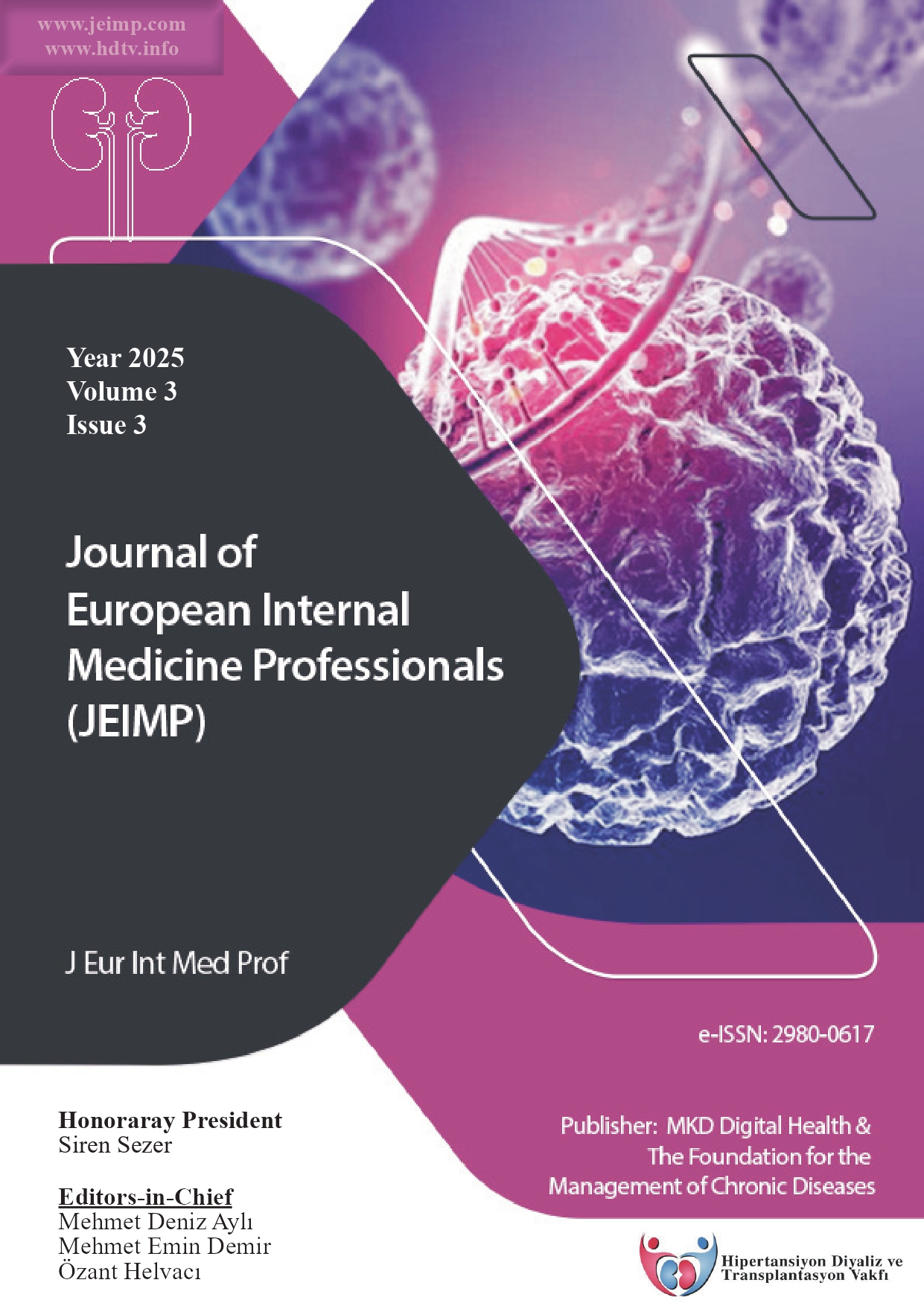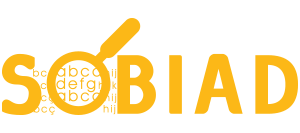Assessment of Oxidative Stress in Hashimoto’s Thyroiditis Patients: Effects of Levothyroxine Sodium Treatment
Oxidative Stress in Hashimoto’s Thyroiditis
DOI:
https://doi.org/10.5281/zenodo.15231061Keywords:
Autoimmunity, Oxidatvie Stress, Hashimoto DiseaseAbstract
Background: Hashimoto’s thyroiditis (HT) is a prevalent autoimmune disease characterized by chronic inflammation of the thyroid gland, leading to hypothyroidism. Oxidative stress has been implicated in the pathogenesis of HT, influencing disease progression and therapeutic outcomes. Understanding the dynamics of thiol/disulfide balance, a marker of oxidative stress, in HT patients receiving levothyroxine treatment is crucial for elucidating its role in disease management. Our study has the largest cohort on this topic.
Methods: This study enrolled 357 euthyroid HT patients, divided into groups based on levothyroxine treatment status. Thiol/disulfide homeostasis was assessed using the Erel method. Clinical parameters, including thyroid function tests and antibody levels, were measured. Statistical analyses were performed to compare oxidative stress markers between groups.
Results: Patients on levothyroxine therapy showed lower native and total thiol levels than untreated patients, indicating potential antioxidant depletion. Higher disulfide/native thiol and disulfide/total thiol ratios in the treated group suggest elevated oxidative stress. There were no correlations between thyroid antibodies (TPO-Ab, TG-Ab) and thiol/disulfide levels.
Conclusion: This study highlights alterations in thiol/disulfide balance among euthyroid HT patients, with implications for oxidative stress management in clinical practice. Levothyroxine treatment appears to be associated with oxidative stress markers, suggesting associations that warrant further investigation.
References
Hollowell JG, Staehling NW, Flanders WD, et al. Serum TSH, T(4), and thyroid antibodies in the United States population (1988 to 1994): National Health and Nutrition Examination Survey (NHANES III). J Clin Endocrinol Metab. 2002;87(2):489-499. doi:10.1210/jcem.87.2.8182
Tomer Y, Barbesino G, Greenberg DA, Concepcion E, Davies TF. Mapping the major susceptibility loci for familial Graves' and Hashimoto's diseases: evidence for genetic heterogeneity and gene interactions. J Clin Endocrinol Metab. 1999;84(12):4656-4664. doi:10.1210/jcem.84.12.6216
Tomer Y, Davies TF. Infection, thyroid disease, and autoimmunity. Endocr Rev. 1993;14(1):107-120. doi:10.1210/edrv-14-1-107
Mariotti S, Caturegli P, Piccolo P, Barbesino G, Pinchera A. Antithyroid peroxidase autoantibodies in thyroid diseases. J Clin Endocrinol Metab. 1990;71(3):661-669. doi:10.1210/jcem-71-3-661
Nordyke RA, Gilbert FI Jr, Miyamoto LA, Fleury KA. The superiority of antimicrosomal over antithyroglobulin antibodies for detecting Hashimoto's thyroiditis. Arch Intern Med. 1993;153(7):862-865.
Glick AB, Wodzinski A, Fu P, Levine AD, Wald DN. Impairment of regulatory T-cell function in autoimmune thyroid disease. Thyroid. 2013;23(7):871-878. doi:10.1089/thy.2012.0514
Weetman AP. An update on the pathogenesis of Hashimoto's thyroiditis. J Endocrinol Invest. 2021;44(5):883-890. doi:10.1007/s40618-020-01477-1
Ruggeri RM, CampennÌ A, Giuffrida G, et al. Oxidative stress as a key feature of autoimmune thyroiditis: an update. Minerva Endocrinol. 2020;45(4):326-344. doi:10.23736/S0391-1977.20.03268-X
Rostami R, Aghasi MR, Mohammadi A, Nourooz-Zadeh J. Enhanced oxidative stress in Hashimoto's thyroiditis: inter-relationships to biomarkers of thyroid function. Clin Biochem. 2013;46(4-5):308-312. doi:10.1016/j.clinbiochem.2012.11.021
Rybakova AA, Platonova NM, Troshina EA. Oxidative stress and its role in the development of autoimmune thyroid diseases [in Russian]. Probl Endokrinol (Mosk). 2020 Jun 10;65(6):451–457. doi:10.14341/probl11827
Baser H, Can U, Baser S, Yerlikaya FH, Aslan U, Hidayetoglu BT. Assesment of oxidative status and its association with thyroid autoantibodies in patients with euthyroid autoimmune thyroiditis. Endocrine. 2015;48(3):916-923. doi:10.1007/s12020-014-0399-3
Ruggeri RM, Vicchio TM, Cristani M, et al. Oxidative Stress and Advanced Glycation End Products in Hashimoto's Thyroiditis. Thyroid. 2016;26(4):504-511. doi:10.1089/thy.2015.0592
Finkel T. Redox-dependent signal transduction. FEBS Lett. 2000;476(1-2):52-54. doi:10.1016/s0014-5793(00)01669-0
Dean RT, Fu S, Stocker R, Davies MJ. Biochemistry and pathology of radical-mediated protein oxidation. Biochem J. 1997;324 ( Pt 1)(Pt 1):1-18. doi:10.1042/bj3240001
Jones DP, Liang Y. Measuring the poise of thiol/disulfide couples in vivo. Free Radic Biol Med. 2009;47(10):1329-1338. doi:10.1016/j.freeradbiomed.2009.08.021
Erel O, Neselioglu S. A novel and automated assay for thiol/disulphide homeostasis. Clin Biochem. 2014;47(18):326-332. doi:10.1016/j.clinbiochem.2014.09.026
Ates I, Altay M, Yilmaz FM, et al. Dynamic thiol/disulfide homeostasis in patients with autoimmune subclinical hypothyroidism. Endocr Res. 2016;41(4):343-349. doi:10.3109/07435800.2016.1156124
Kaplan M, Ates I, Yuksel M, et al. Thiol/disulphide homeostasis in celiac disease. World J Gastrointest Pharmacol Ther. 2017;8(2):120-126. doi:10.4292/wjgpt.v8.i2.120
Yuksel M, Ates I, Kaplan M, et al. The dynamic thiol/disulphide homeostasis in inflammatory bowel disease and its relation with disease activity and pathogenesis. Int J Colorectal Dis. 2016;31(6):1229-1231. doi:10.1007/s00384-015-2439-8
Ates I, Kaplan M, Yuksel M, et al. Determination of thiol/disulphide homeostasis in type 1 diabetes mellitus and the factors associated with thiol oxidation. Endocrine. 2016;51(1):47-51. doi:10.1007/s12020-015-0784-6
Abalovich M, Llesuy S, Gutierrez S, Repetto M. Peripheral parameters of oxidative stress in Graves' disease: the effects of methimazole and 131 iodine treatments. Clin Endocrinol (Oxf). 2003;59(3):321-327. doi:10.1046/j.1365-2265.2003.01850.x
Bednarek J, Wysocki H, Sowiński J. Oxidative stress peripheral parameters in Graves' disease: the effect of methimazole treatment in patients with and without infiltrative ophthalmopathy. Clin Biochem. 2005;38(1):13-18. doi:10.1016/j.clinbiochem.2004.09.015
Resch U, Helsel G, Tatzber F, Sinzinger H. Antioxidant status in thyroid dysfunction. Clin Chem Lab Med. 2002;40(11):1132-1134. doi:10.1515/CCLM.2002.198
Erdamar H, Demirci H, Yaman H, et al. The effect of hypothyroidism, hyperthyroidism, and their treatment on parameters of oxidative stress and antioxidant status. Clin Chem Lab Med. 2008;46(7):1004-1010. doi:10.1515/CCLM.2008.183
Reddy VS, Gouroju S, Suchitra MM, et al. Antioxidant defense in overt and subclinical hypothyroidism. Horm Metab Res. 2013;45(10):754-758. doi:10.1055/s-0033-1348262
Ruggeri RM, Barbalace MC, Cristani MT, et al. Serum levels of advanced glycation end products (AGEs) are increased and their soluble receptor (sRAGE) reduced in Hashimoto's thyroiditis. J Endocrinol Invest. 2020;43(9):1337-1342. doi:10.1007/s40618-020-01231-7
Csiha S, Molnár I, Halmi S, et al. Advanced glycation end products and their soluble receptor (sRAGE) in patients with Hashimoto's thyroiditis on levothyroxine substitution. Front Endocrinol (Lausanne). 2023;14:1187725. Published 2023 May 26. doi:10.3389/fendo.2023.1187725
Ates I, Altay M, Yilmaz FM, et al. The impact of levothyroxine sodium treatment on oxidative stress in Hashimoto's thyroiditis. Eur J Endocrinol. 2016;174(6):727-734. doi:10.1530/EJE-15-1061
Ates I, Arikan MF, Altay M, et al. The effect of oxidative stress on the progression of Hashimoto's thyroiditis. Arch Physiol Biochem. 2018;124(4):351-356. doi:10.1080/13813455.2017.1408660
Nanda N, Bobby Z, Hamide A. Oxidative stress in anti thyroperoxidase antibody–positive hypothyroid patients. Asian J Biochem. 2012;7:54–58. doi:10.3923/ajb.2012.54.58
Downloads
Published
How to Cite
Issue
Section
Categories
License
Copyright (c) 2025 Burçak Cavnar Helvacı, Özant Helvacı, Gamze Dam, Salim Neşelioğlu, Özcan Erel

This work is licensed under a Creative Commons Attribution 4.0 International License.










